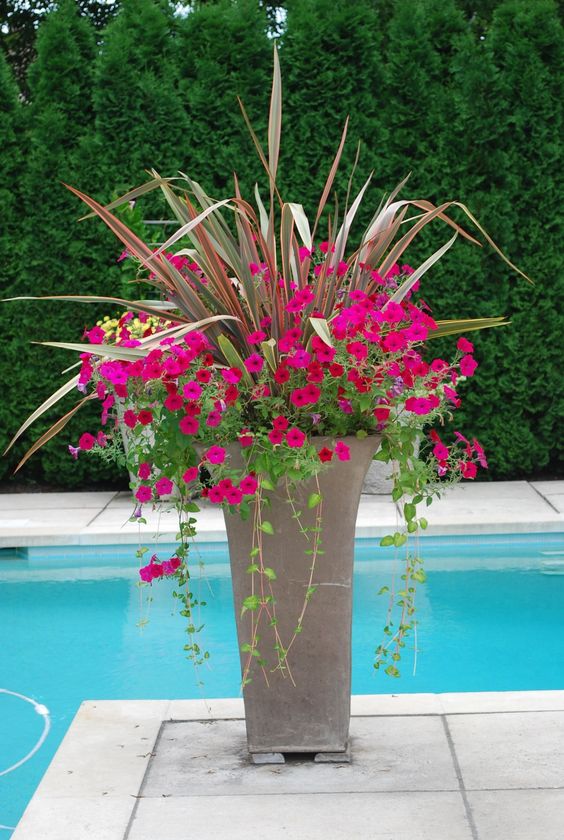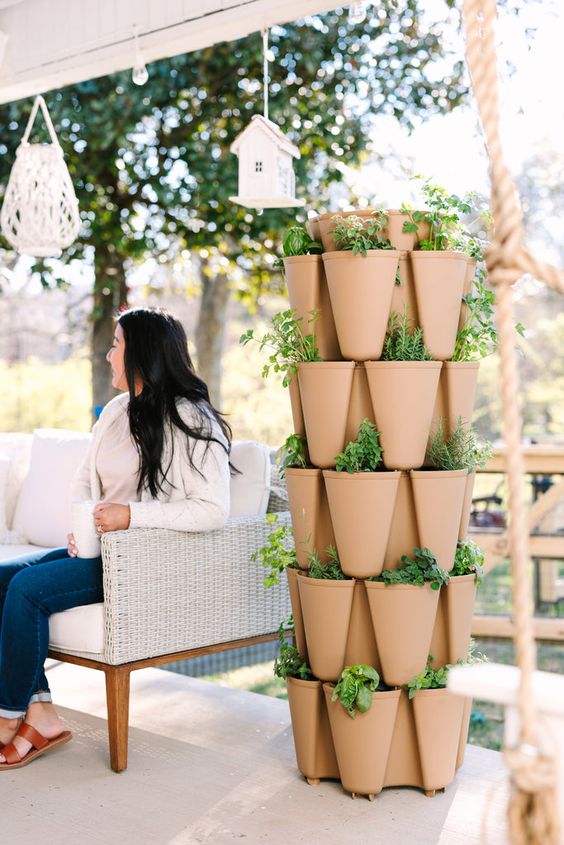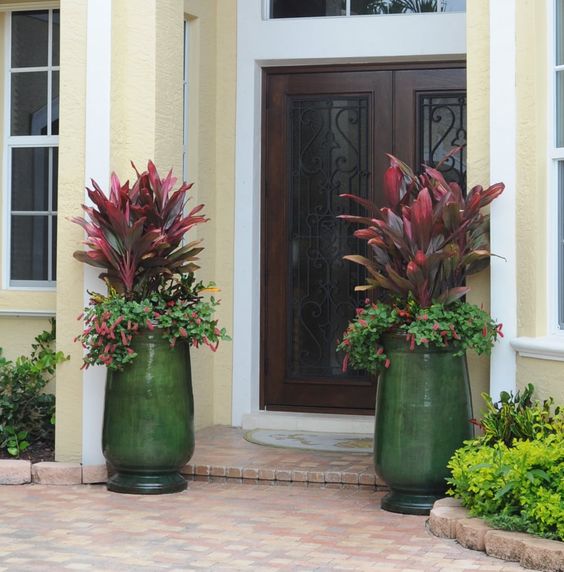Elevating your garden, both literally and figuratively, with tall planters can add a new dimension of elegance and structure to your outdoor spaces.
I’ve found that the added height showcases plants effectively and can also serve various functional purposes. It’s an excellent way to create privacy, define different areas within a garden or balcony, and make caring for your plants less of a strain on your back.
By selecting the right tall planters, you can enhance the visual appeal of your space and provide a sturdy home for your plants to thrive.
Choosing the right planters goes beyond aesthetics; it involves considering the materials, the size relative to the plant’s growth, and the overall harmony with your outdoor decor.
I always recommend considering durability and weather resistance to ensure your investment stands the test of time.
When it comes to plant selection and care, it’s imperative to match your green companions with the environment they’ll inhabit.
Some plants naturally lend themselves to lofty perches in tall planters, where their cascading or upright foliage can be fully appreciated.
Reader's Roadmap
Key Takeaways
- Tall planters offer both decorative and functional benefits for gardening.
- Selecting the appropriate planter involves material and size considerations.
- Proper plant choice and care are crucial for the success of tall planter gardening.
Bamboo Tall Planter With Openigd

Black Planters With Holes

Concrete Floating Fabric Planter

Dark Curved Cylindrical Planter

Cylindrical Planter With Wider Opening

Dark Iridescent Metallic Planters

Faux Well Planter

Five-tier Vertical Garden Planter

Gold Planter On Tall Stand

Green Jade Vase-like Planters

Hourglass Planters

Hulled Out Tree Stumps

Marble Square Planters

Morden Slat Wood Planters

Mosaic Tall PVC Planter

Pebble Slim Square Planter

Pebble Swirl Planter With Chicken Wire

Pinecone Pattern Plants

Purple Cylinder Planters

Rectangular Planter

Sedona Tall Planter

Square Planters With Narrower Base

Square Wicker Planters

Tall Cactus Shaped Planter from PVC

Tall Concrete Podium With Bowl Planters

Tiered Succulent Planters

White Plastic Wicker Pattern Planters

Wood Panel With Edges And Legs

Wooden Planter Box With Rope

Wood Slice Covered Planter

Wide Cube Planters With Lanterns

Choosing the Right Planters
When picking the perfect planters for my space, I pay close attention to the materials and dimensions—they’re the stars of the show.
Let me guide you through what I’ve learned on this.
Understanding Planter Materials
I’ve discovered that planters come in a variety of materials, each with its unique strengths.
For starters, ePlanters.com is my go-to for exploring options. They’ve got a range that’s sure to match any of my garden moods, from modern chic to classic elegance.
I’m particularly fond of GreenLine Aluminum planters for their lightweight durability and sleek design that feels at home in my contemporary garden setup. They resist corrosion, which means they stay looking new for ages.
For a more earthy aesthetic, Campania GFRC (Glass Fiber Reinforced Concrete) planters have won a spot on my patio. They offer the look of concrete without the back-breaking weight, making redecorating a breeze. Plus, they weather beautifully, contributing to that perfect, lived-in garden vibe I adore.
And I can’t forget my indoor favorites, the Lechuza planters.
What’s genius about them is the self-watering feature that keeps my plants hydrated with minimal fuss. Honestly, it’s a lifesaver for someone like me who sometimes forgets to water.
Selecting the Ideal Size and Shape
I’ve learned that size and shape aren’t just about aesthetics; they’re crucial to plant health.
A rule of thumb I stick by is larger planters for large plants and smaller ones for the little guys. Here’s a quick reference:
- Small planters (up to 12 inches): Ideal for desktop plants or tabletop arrangements.
- Medium planters (12 to 24 inches): My choice for smaller shrubs or perennial flowers.
- Large planters (over 24 inches): Perfect for those statement pieces, like a majestic palm or a stately olive tree.
Shape-wise, I like to match my plant’s growth pattern. For example, tall, slender planters accentuate the elegant lines of grasses or bamboo, while wide, bowl-shaped options give room for spreading plants to flourish.
Plant Selection and Care
When choosing plants for tall planters, it’s essential to consider both aesthetics and their specific care requirements to ensure they thrive.
Decorative Plants for Visual Appeal
I love using tall planters as a way to add height and structure to my garden space.
For a striking visual appeal, I often opt for plants with lush foliage or vibrant flowers. A table of suggestions:
| Plant Type | Attributes | Appeal |
|---|---|---|
| Ferns | Feathery, green fronds | Adds a soft, delicate texture |
| Euphorbia | Unique shapes; drought-resistant | Provides an architectural element |
| Coral Bells | Colorful leaves; attracts hummingbirds | Adds vibrant color & invites wildlife |
These plants are not only beautiful, but they also cater to various aspects of the growing season. Perennials like coral bells delight throughout the year and become the focal point of my planter arrangement.
Caring for Your Plants: Soil and Watering Needs
Taking care of plants in tall planters doesn’t have to be a challenge. I’ve learned the importance of choosing the right soil and understanding the watering needs of each plant.
A quick list of care tips:
- Soil: Use well-draining soil to prevent root rot. For most flowers and foliage plants, I mix in organic compost for added nutrients.
- Watering: The height of the planters can affect how quickly the soil dries out. I check my planters every couple of days to ensure the soil is moist but not waterlogged. Frequent watering may be needed during the peak growing season.
Remember, each plant has its unique needs, so it’s crucial to research their specific requirements. With the right care, my plants remain healthy and visually stunning all year round.







Leave a Reply
View Comments